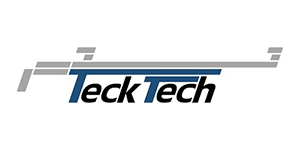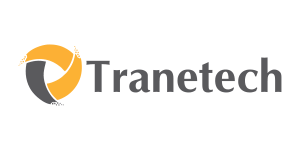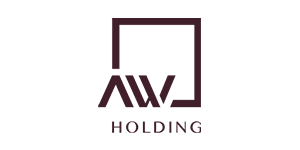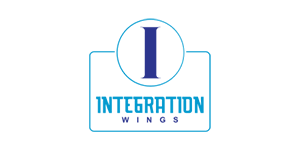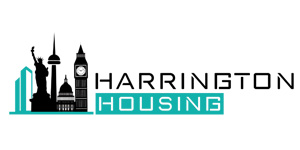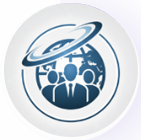Workplace Challenges
Turning Workplace Challenges into Productivity Wins
Even in the office, hidden inefficiencies like idle time, distractions, and manual processes cut into productivity. Mera Monitor helps uncover these gaps and turn them into measurable improvements.
Challenge
- Idle time and distractions often go unnoticed, leading to reduced productivity and efficiency.
- Manual attendance tracking often leads to errors and makes it easier for buddy punching to occur.
- There is no clear understanding of how employees are using the apps and tools available to them.
- Performance reviews are often conducted based on assumptions rather than concrete data and evidence.
- The risk of unauthorized applications or potential data misuse within the office environment.
Solution
- Detect idle time and measure focus levels to improve accountability
- Automate time & attendance with precise logs of logins, breaks, and work hours
- Track app and website usage to identify distractions and optimize workflows
- Use AI-powered reports and dashboards for fair, data-driven evaluations
- Flag unapproved apps, monitor sensitive access, and strengthen compliance
How Mera Monitor Helps In Office Teams
Accurate Time & Attendance
App & Website Usage Insights
Idle Time Tracking
AI-Powered Productivity Reports
Project & Task-Level Tracking
Attendance & Payroll Accuracy
Productivity Benchmarking
Collaboration & Accountability
The Power
From Presence to Performance: The Power of In-Office Monitoring
Clarity in Productivity
- Gain real-time visibility into how employees spend their work hours.
- Identify bottlenecks that slow down projects.
- Redirect focus toward high-value, business-critical tasks.
Enhanced Security & Compliance
- Monitor app and data access to prevent insider risks.
- Flag unauthorized tools or websites instantly.
- Maintain compliance with industry-specific regulations.
Improved Team Efficiency
- Detect idle time and reduce wasted hours in the office.
- Balance workloads by spotting underutilized and overworked employees.
- Improve collaboration by identifying process inefficiencies.
Accurate Time & Attendance
- Eliminate manual logs and buddy punching with automated tracking.
- Capture exact logins, breaks, and active hours.
- Ensure payroll and overtime calculations are always accurate.
Fair & Transparent Evaluation
- Replace guesswork with data-driven performance reviews.
- Provide equal accountability across all employees and departments.
- Give employees visibility into their own productivity data.
Seamless Organization-Wide Insights
- Compare productivity across teams, projects, and departments.
- Access AI-powered dashboards for real-time decision-making.
- Align organizational goals with team-level performance data.
Use Cases by Industry
Mera Monitor adapts to the way you work—whether you're delivering services, managing distributed teams, or supporting customers around the clock. Here's how our remote employee monitoring software powers productivity across industries.

Service Providers
Deliver amazing service from anywhere.
- BPOs - Monitor agent productivity, reduce idle time, and meet client SLAs across global shifts.
- Agencies - Track project time, app usage, and keep creatives aligned without micromanaging.
- Software & IT - Gain visibility into dev time, code-related activities, and tool usage with clarity.
Financial & Healthcare
Manage a global workforce at scale.
- Insurance - Track time across underwriting, claims, and remote support operations.
- Financial Services - Log billable hours accurately, ensure compliance, and generate audit-ready reports.
- Healthcare Admin - Monitor non-clinical staff performance and remote scheduling support with complete transparency.
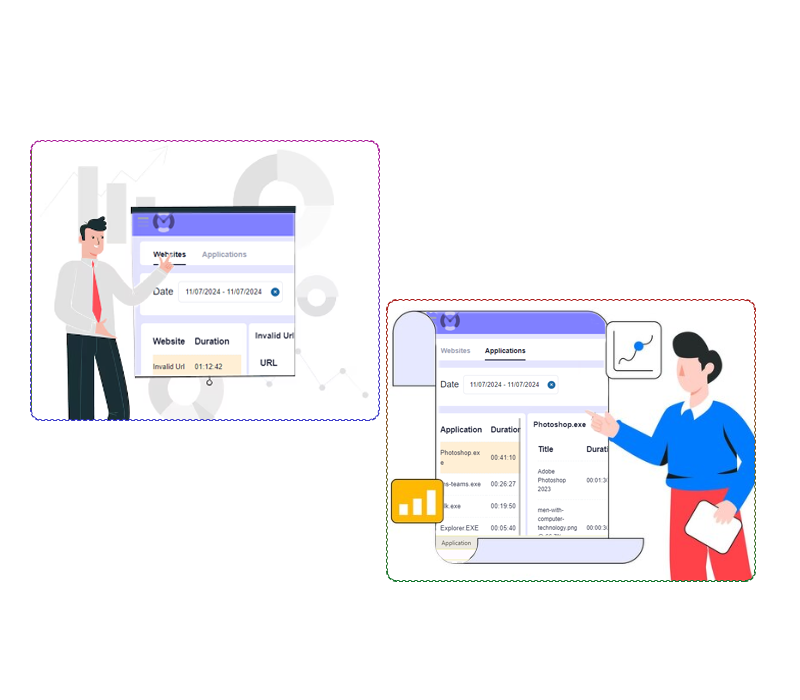
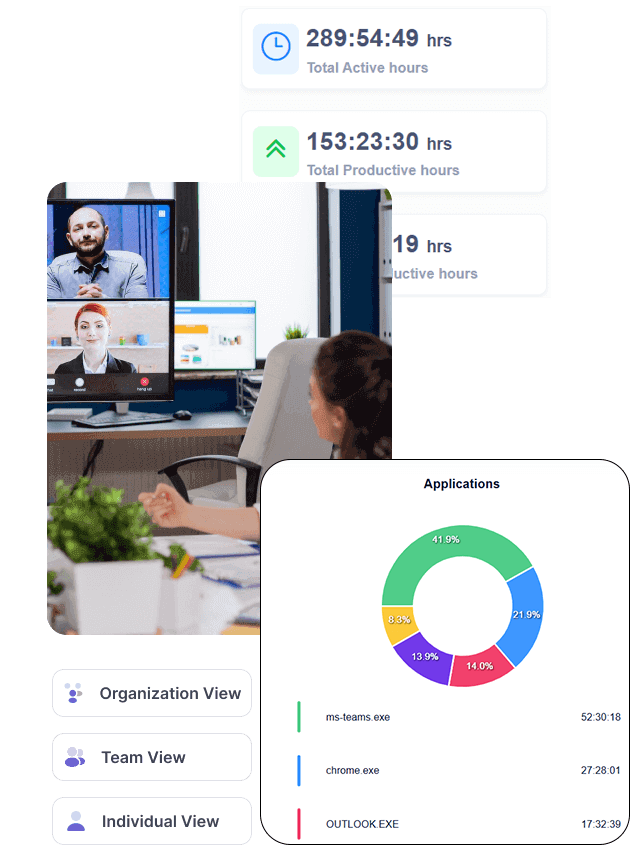
Support Teams
Offer around-the-clock support with full visibility.
- Call Centers - Live screen monitoring, app usage insights, and shift-based tracking for agent accountability.
- Data Entry - Ensure accuracy, speed, and productivity with idle-time alerts and detailed activity logs.
- Customer Service - Maintain high service standards by tracking engagement, tool usage, and availability.
Client Reviews
What They Are Talking About Mera Monitor
⚡ Fast, free, and no card required
A Global Staffing Firm
- - A Global Staffing Firm
Our experience with Mera Monitor has been seamless and efficient. We appreciate the proactive support and consistent responsiveness from the team whenever needed.
Pragati P
- Consultant at FineSoft Technologies
Reliable Employee Monitoring Software with Good Productivity Insights
FORnSEC Solutions
- — FORnSEC Solutions
Mera Monitor has significantly simplified my daily monitoring and management tasks. The interface is clean, intuitive, and easy to navigate even for non-technical users. I highly recommend it to anyone in need of a reliable and user-friendly monitoring solution. Thank you for building such a robust and thoughtful platform.
Deep Doshi
- Founder Wama Technology
Mera Monitor offers a user-friendly platform that provides valuable real-time insights into team productivity, helping managers optimize workflows and enhance performance.
Jatin Kumar
- Product Lead at Dezy IT
We use this tool daily. It is super usefull for employee monitoring, specially in remote team culture.
Prakash Makwana
- Product Design Lead at PiplHR
Mera Monitor is an exceptional tool for performance monitoring, offering invaluable support for organizational decision-making. Its real-time monitoring and live-streaming capabilities provide complete visibility into team activities, ensuring transparency and accountability. It’s a must-have solution for any organization looking to optimize performance and drive success.
Sushma Chowta
- Sr. HR Manager, Synergy Connect
Mera Monitor provides reports on work patterns and performance. Reduces bias in performance reviews. Great monitoring tool for any organization!
Abhishek Sharma
- Startup Founder
The best employee monitoring tool out there! Mera Monitor has features like live streaming and screen capturing that make it unique!
Salil Mathur
- Former CEO, Human Capital
Mera Monitor is a handy monitoring system that enhances productivity and efficiency across the workforce. It is simple to use and very helpful in managing projects with a diverse workforce working from home. It also checks and oversees the work ethics of employees.
Ashish Vyas
- CEO, 4Tuners Technologies Pvt Ltd
It just amazing and beneficial software specially for the StartUps like 4Tuners Technologies. The main feature which actually attracted me is to track the live performance of employees and their tracking. And one more thing which suits me is, its easy to use interface with covering all necessary features.
H Lindsey
I really like the live streaming feature, as it allows us to monitor the team’s tasks without bothering or stopping their work. I’m also pleased with the support we received to resolve our issues.
Jagesh Fartiyal
- Full Stack Developer
I must say that I’ve found the reports section of Mera Monitor to be exceptionally impressive. It’s not only user-friendly but also highly understandable. Moreover, the various alerts provided by Mera Monitor, such as the idle alert and suspicious activities alerts, have proven to be invaluable in day-to-day operations.
Aasif Ansari
- Lead Consultant, IT Infra
I can’t express how impressed I am with MeraMonitor. It’s a game-changer in system monitoring apps, It surpasses all others with its comprehensive features and user-friendly interface. MeraMonitor’s support team adds to the exceptional experience, making it the go-to choice for anyone seeking a reliable and efficient monitoring solution. Highly recommended!
Rhutuja Tingne
- QA Engineer
Mera Monitor is a user-friendly and effective application, this app has become my go-to tool for tracking and optimizing my productivity. In the Mera Monitor app, I can track every activity very accurately and get more detailed information about the various activities during the run time of the application I feel it’s a valuable tool for boosting productivity in our corporate environment.
Sunil Patil
- Sr Full Stack Developer
The application is very well designed as well as works very smoothly.
Susmita Roy
- Senior HR Executive
MM stands as the ultimate remote attendance monitoring solution, skilfully overseeing your team’s presence with ease and precision. Its user-friendly interface seamlessly delivers comprehensive reports, offering features like automatic screenshot capture to various activity level monitoring.
Rajul Gupta
- Sr Project Management Consultant
Mera Monitor allows us to focus on what really matters. An attractive UI that offers 360 degree view and automated timetracking make Mera Monitor a good choice for time monitoring. You can view your daily productivity analysis, that making it a useful productivity tracker as well.
Mohammed Haris
- Human Resource Lead,Dezy IT
We find Mera Monitor to be of great use to us working from a remote environment.
Monitor Employee Performance
Our employee productivity monitoring software empowers to track which applications and websites your employees are using individually or as a team , enabling you to make informed decisions that enhance focus, streamline workflows, and boost overall performance.
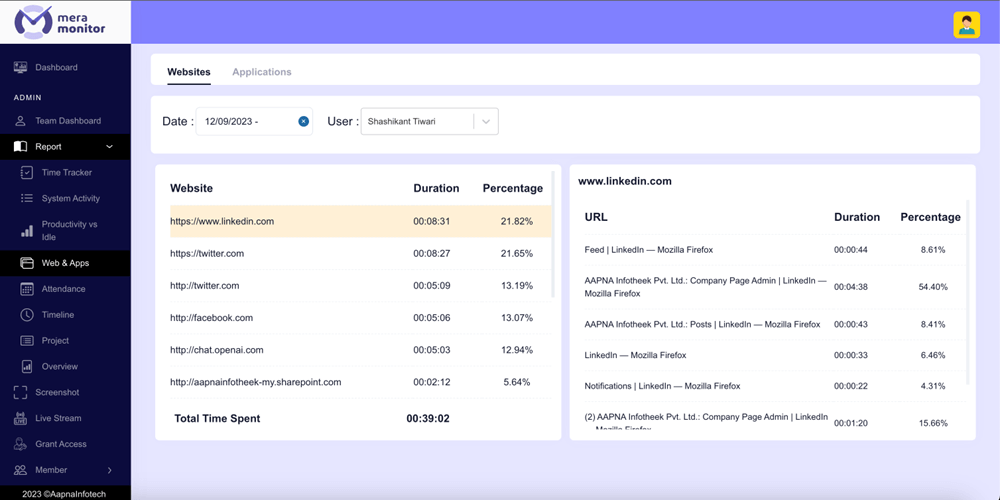
Screen monitoring function takes screenshots of your employees computer screens at random intervals ranging from 1 to 100 minutes during work hours. This feature provides insights into their tasks, workflow, and application/website usage, aiding in performance evaluation and time management analysis.
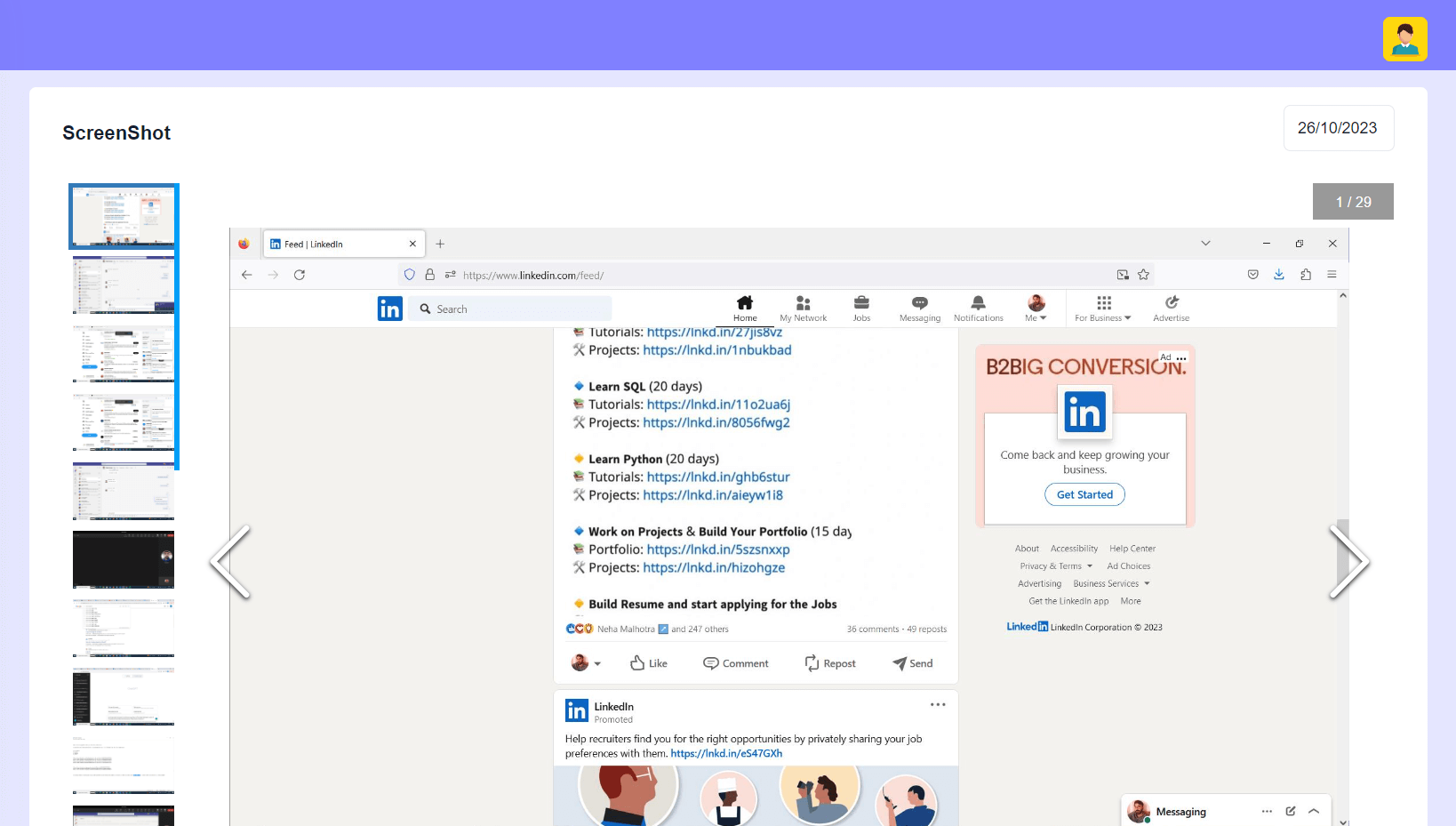
Our employee time monitoring software comes equipped with an intuitive dashboard. Intuitive dashboard consolidates data from various sources, presenting it in a user-friendly format. Get a quick overview of key metrics, app usage trends, website visit patterns, and more, all in one central location.
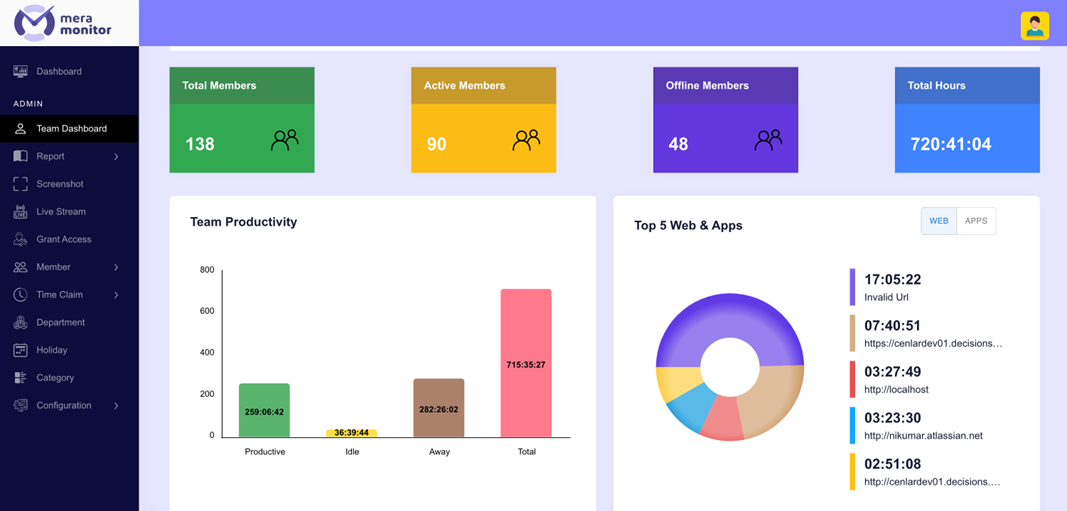
Unlock the ability to measure, analyze, and elevate your team’s productivity to new heights with our comprehensive productivity tracking feature. Our productivity tracking feature captures every second of work time, ensuring that you have an accurate representation of how your team invests their hours. No more wondering if tasks are taking longer than they should – now you’ll have the data to back it up.
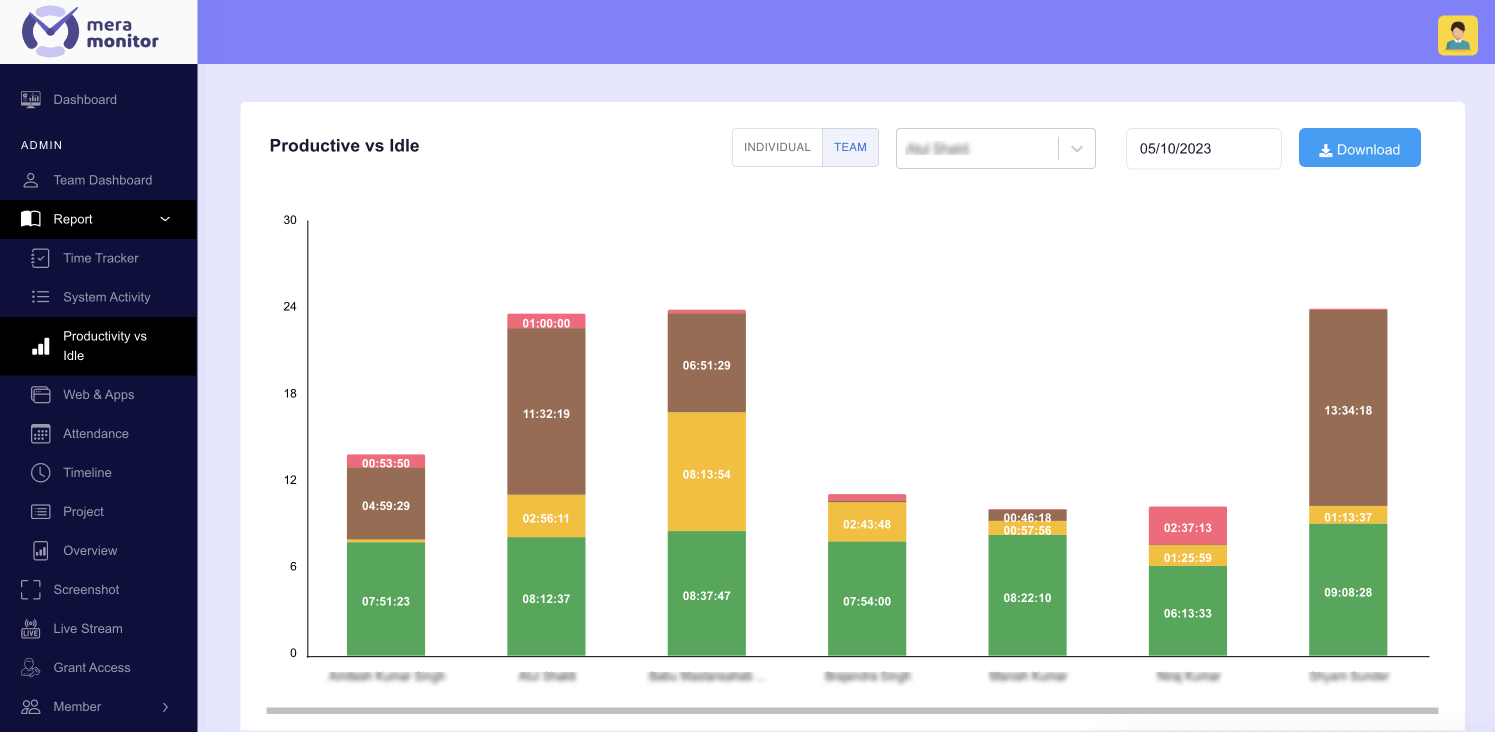
In the digital age, understanding how your team interacts with web and app resources is essential for maximizing efficiency. Our employee productivity monitoring software offers comprehensive web and app usage tracking, giving you the insights needed to optimize work habits, reduce distractions, and drive productivity.
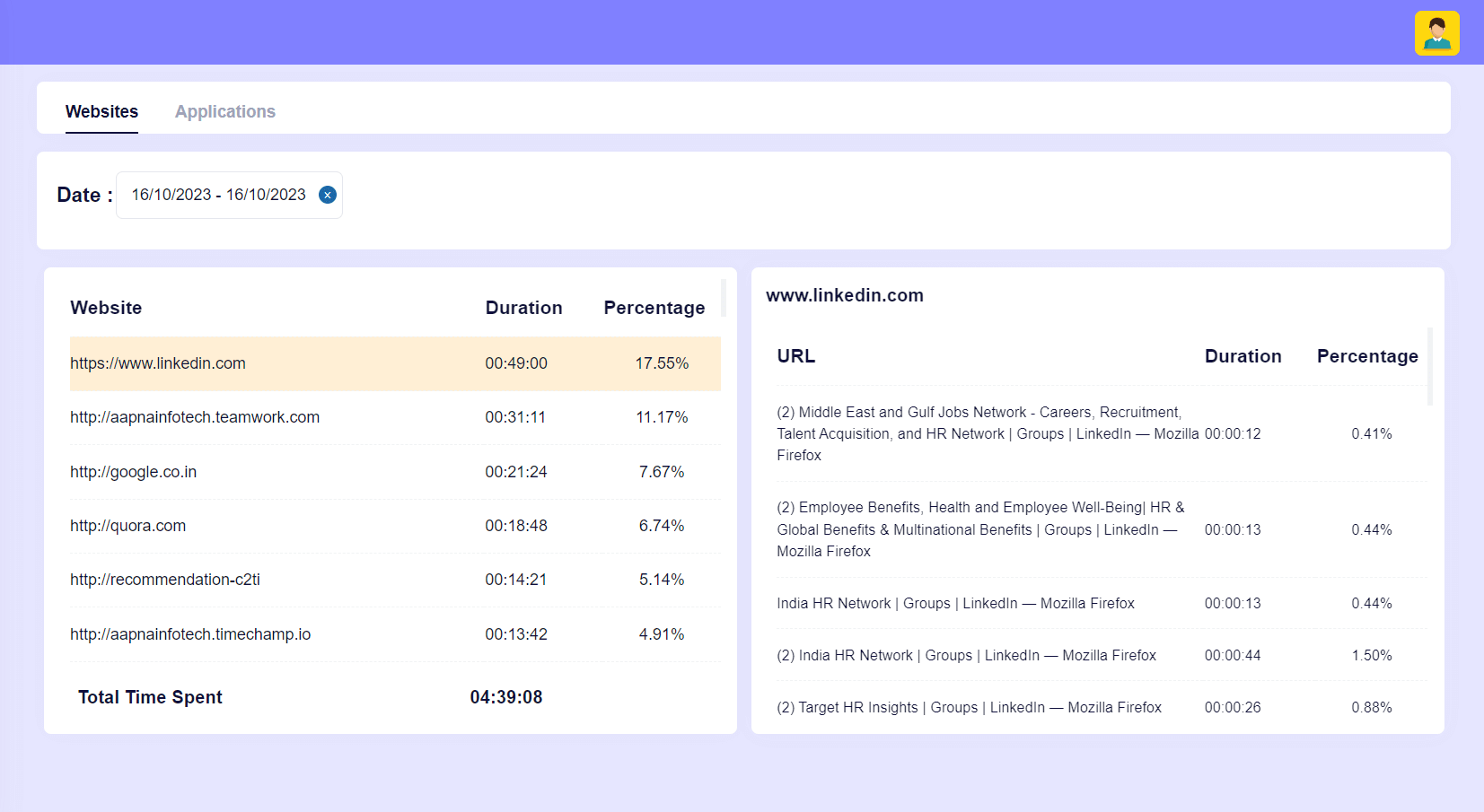
Frequently Asked Questions
Remote employee monitoring software is a digital solution that helps businesses track, manage, and analyze the work activities of employees who work remotely. These tools provide visibility into employee performance, ensure accountability, and support effective remote team management—whether your workforce is fully remote or hybrid.
A remote employee monitoring software typically includes features such as:
Time tracking: Automatically logs working hours, start/end times, and session durations.
Activity monitoring: Tracks active, idle, and away time, along with app and website usage to provide a clear picture of how time is spent.
Screenshots and screen recording: Captures screen snapshots at set intervals or based on triggers to support transparency and performance reviews.
Productivity insights: Generates detailed reports to help managers analyze trends, identify bottlenecks, and support employee development.
Real-time alerts: Notifies managers about extended idle time, unusual behaviors, or non-work-related activity.
With the help of a remote employee monitor, organizations can:
Identify productivity gaps and eliminate distractions
Monitor remote workers fairly and efficiently
Strengthen data security and compliance
Support outcome-based performance management
Build a more accountable and results-driven remote culture
Modern remote employee monitoring tools like Mera Monitor are built for more than just oversight—they’re designed to help remote teams thrive through data-driven decision-making, proactive coaching, and operational clarity.
If your team works remotely—even part of the time - remote employee monitoring tools are no longer optional; they’re a strategic necessity. Businesses today face unique challenges when managing remote teams: lack of visibility, reduced accountability, inconsistent productivity, and difficulty measuring real-time performance.
Here are some of the most common pain points businesses face without a remote employee monitor in place:
Not knowing how work hours are spent
Difficulty identifying performance bottlenecks
Increased idle time or unproductive behavior going unnoticed
Delayed project timelines due to poor time management
Security risks from unsupervised device or app usage
Overburdened high performers and disengaged team members
This lack of clarity often leads to lower output, poor employee engagement, and increased operational costs - directly affecting profitability.
That’s where a solution like Mera Monitor’s remote employee monitoring software makes all the difference.
With features like real-time activity tracking, idle/away time analysis, app usage insights, automated screenshots, and productivity reports, Mera Monitor helps you:
Understand exactly how your remote team works
Improve accountability without micromanaging
Identify underperformance early and take proactive action
Reward productive employees based on real data
Ensure optimal time utilization across projects
Protect business data with detailed user logs and alerts
In short, remote monitoring tools give you the control, insight, and confidence needed to run a high-performing remote or hybrid team—so you can make better decisions, improve efficiency, and grow your business without losing oversight.
Choosing the right remote employee monitoring software is about more than just tracking time—it’s about finding a solution that helps you lead smarter, support your team, and improve overall business performance.
Here are the key features to look for when evaluating a remote employee monitor:
✅ 1. Time Tracking
Look for software that not only logs total hours but also shows how those hours are spent—whether actively working, idle, or away. This helps you understand focus patterns, reduce time theft, and support better time management.
✅ 2. Real-Time Activity Monitoring
You should be able to see what applications and websites are being used during work hours. This ensures your team is using the right tools productively and helps detect distractions or potential data security risks.
✅ 3. Screenshots Monitoring
Screenshots at scheduled intervals can provide visual confirmation of work—especially useful in client-service industries or regulated environments. Choose software that allows you to turn this on or off based on team preferences and privacy norms.
✅ 4. Productivity Reports and Dashboards
A good remote employee monitor will translate raw data into meaningful insights. Look for dashboards that highlight trends, compare team members, and show productivity over time—helping you make data-driven decisions.
✅ 5. Alerts and Notifications
Smart alerts (like extended idle time, unusual behavior, or missed logins) allow you to catch issues early—before they affect deadlines or performance.
✅ 6. Role-Based Access and Privacy Controls
Your monitoring tool should allow different levels of access—for example, what managers can see vs. what employees can see. This helps maintain transparency while respecting privacy.
✅ 7. Integration with Your Tech Stack
Whether it’s project management tools, HR systems, or communication platforms, the software should integrate easily with what your team already uses. This keeps everything connected and reduces context-switching.
✅ 8. Cloud-Based, Scalable, and Easy to Use
Choose a solution that works across locations and devices, scales with your team size, and doesn’t require a steep learning curve.
Why It Matters
A tool like Mera Monitor brings all these features together to help you monitor remote workers effectively—not for control, but for clarity. You’ll spend less time guessing and more time leading. The result? Higher accountability, better performance, and more predictable business outcomes.
Yes, using remote worker monitoring software is legal. However, it is also essential for employers to ensure proper compliance with required laws. They should also follow employee monitoring ethics while maintaining maximum transparency in remote employee monitoring practices. Besides, they should notify their employees about implementing the monitoring tool. If you plan to use one, consult a legal team to know the legality of using these monitoring programs.
Remote employee monitoring software gives teams the structure and visibility they need to stay productive in distributed work environments. Without regular in-person interaction, it becomes difficult to understand where time is spent, how aligned teams are with business priorities, or which processes are slowing things down.
Monitoring tools address this by tracking employee activity across applications, websites, and tasks—offering actionable insights into time management, workload patterns, and operational inefficiencies. Leaders can identify distractions, prevent burnout, and ensure high-value work is getting done without micromanaging.
In addition to helping managers, these tools also empower employees. With access to their own productivity data, individuals can self-correct and stay focused, leading to better accountability and stronger outcomes.
Mera Monitor, for example, balances performance visibility with privacy-conscious features, allowing decision-makers to implement oversight without disrupting trust or culture.
Yes, remote work tracking software may invade an employee’s privacy. It can allow employers to access sensitive information like private communication and passwords. Besides, there are possibilities of data breaches. However, this software doesn’t monitor activities on the computer when employees are logged out or not working. That means remote employees can be at ease knowing that they are not being monitored during their personal time.
Using MeraMonitor, you can identify suspicious employee activities as well as unauthorized access to the company’s network. Furthermore, it enables you to check websites visited, saved files or documents, and installed applications or programs to determine potential risky activity. Moreover, it can also help implement necessary data regulation and compliance by offering organizations insight into how their teams handle business data. By monitoring remote employees, you can effectively lower the risk of insider threats, cybercrime, suspicious behavior, and data breaches.
Yes, it can be easily integrated with many tools. In fact, most remote employee monitoring tools like Meramonitor now support third-party integration to help organizations automate various tasks like invoicing, payroll, and more. For example, you can integrate with the payroll system to automate invoicing, timesheets as well as payments. Such features may vary from one vendor to another. So, check this with the vendor before choosing one.
Even though the use of employee monitoring programs is legal and quite popular among organizations, that doesn’t mean employers won’t face any opposition when implementing it. So, to ensure fair monitoring of your employees, you should first consult your team and explain the software to them. Besides, educate employees about the lawful implementation of the program and prefer to monitor them only during designated hours. It is crucial to keep the entire process transparent.
While tracking remote employees is crucial for every business, employers should perform this responsibly and ethically. To avoid any negative impact of remote employee monitoring, employers need to ensure transparency in monitoring and let the employees know when they are being monitored. Also, explain to them what and why you are monitoring. While collecting employee data, employers should use data anonymization to mask personal data. This will make the data unidentifiable. Try to avoid the feeling of intrusive tracking among the employees.
 Gift Card ₹999
Gift Card ₹999











